The 12 Sight of Dalseong
share
- 홈
- Tourism
- The 12 Sight of Dalseong
-
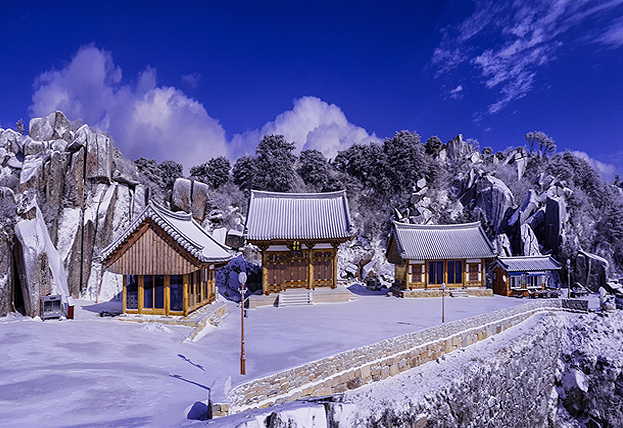
Daegyeonsa Temple and block stream in Biseulsan Mountain
Daegyeonsa is a temple located at the summit of Biseulsan Mountain (height: 1,000m). A legend has it that, under the orders of an emperor of the Tang Dynasty of China to find a good place to build a temple, the emperor’s people found this place and built this temple. It is also said that Monk Iryeon made a plan to compile Samgukyusa (Memorabilia of the Three Kingdoms, 1281) here. Japanese colonists closed the temple down, but in March 2014, about 100 years later, the temple was reopened. The block streams near the temple is the largest of their kind in the country and were thus designated as Natural Monument No. 435. -

Daegu National Science Museum
Opened in 2013, this museum was designed to teach people how to explore nature scientifically, understand the science and technologies used by local businesses, and enjoy hands-on experiences of science. It is a very popular place, attracting more than a million people in about 19 months after its opening. -
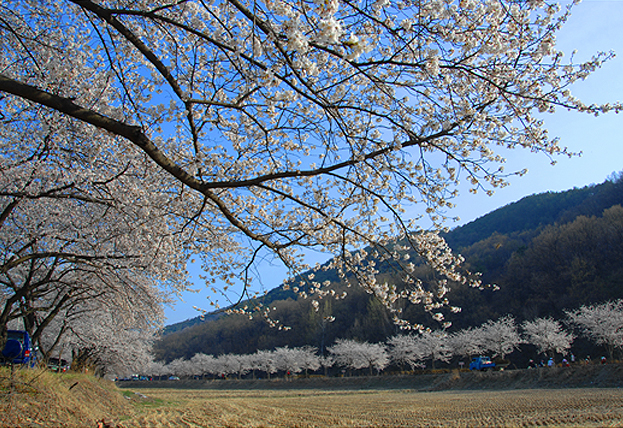
Okpo Cherry Blossom Road
Cherry Blossom Boulevard is the 1.5km-long street lined with cherry trees that leads to the entrance to Yongyeonsa Temple in Okpo-eup. It was selected as the most beautiful street in Daegu in 2010. Since 2012, Okpo-eup has held a cherry blossom festival every spring. -

Azaleas of Biseulsan Mountain
Buddhist temples and historic sites are scattered here and there across Biseulsan Mountain. At the top of the mountain lies a colony of azaleas that spans an area of about one million square meters. When in full bloom in late spring, the flowers create a heavenly atmosphere. The annual Biseulsan Azalea Festival held by the Dalseong-gun Office attracts more than 100,000 people every year. -
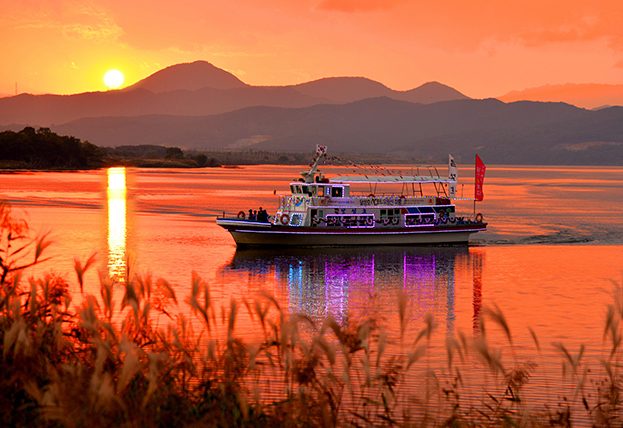
Samunjin Jumakchon Village
A Jumakchon Village was restored on the site of Samunjin Quay, which used to be the center of logistics along Nakdonggang River. It is said that the country’s first piano was imported through this quay. The place has since become a new tourist destination attracting more than one million visitors a year. Leisure boats, ferries, and speedboats are operated here. -
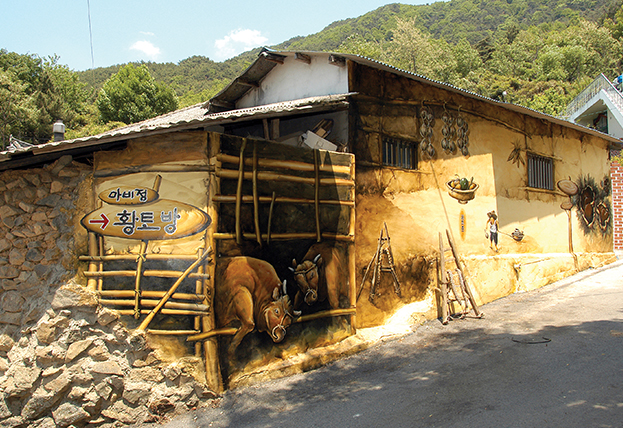
Mabijeong Mural Village
Scenes of rural villages in the 1960s and 1970s were painted on the fences of this village. Here, you can also see the trunks of two trees have joined to become one tree, the oldest lacquer tree in the country, a bamboo tree tunnel, and fringe trees. The village has become a popular tourist destination, with an episode of Running Man, an SBS TV program, even having been filmed here. About 500,000 visitors came in 2014. -
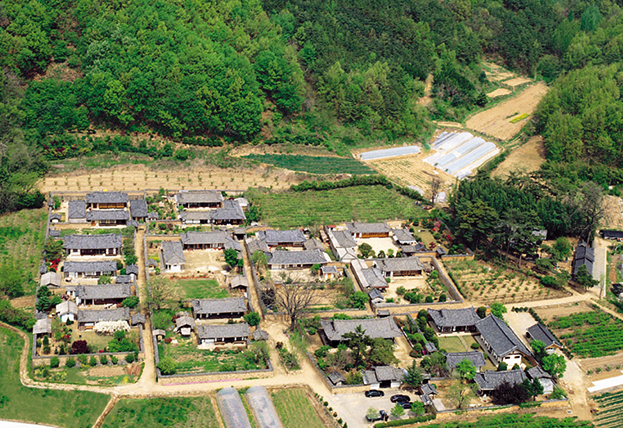
Village of the Nampyeong Mun Clan in Bon-ri
This traditional folk village was formed on the site of Inheungsa Temple in Bonri-ri (Hwawon-eup). MUN Gyeongho, the 18th-generation grandson of MUN Ikjeom, who smuggled a few cotton seeds out of the Yuan Dynasty of China by hiding them in a writing brush and started spreading cotton growing throughout the country, built buildings such as Gwanggeodang Hall (study room), Subongjeongsa Villa, and Insu Mungo (family library). Researchers have found these buildings to be excellent resources for understanding the characteristics of hanok (traditional Korean houses) and how villages were formed during the Joseon Period. Visitors to this village particularly enjoy the beautiful scenery of the pink-colored trumpet creepers on earth fences mixed with white hollyhocks along the village road. -

Gangjeong Goryeongbo Reservoir (The Arc)
The Arc, a three-story aquaculture center (total floor space: 3,688m2) built in Dasa-eup along Nakdonggang River as part of a state project to revamp the nation’s four major rivers, was designed to look like a skimming stone, a fish, or a piece of Korean pottery. It is used by people as a space for rest and relaxation as well as a venue for the Gangjeong Daegu Contemporary Art Festival. -

Dalseong Marsh
This marsh, spanning about 1.5 million square meters, is located at the intersection of Geumhogang River and Nakdonggang River. Registered with the International Union for Conservation of Nature and Natural Resources, it is home to diverse endangered species. It is also the largest habitat for narrow-mouth frogs in the country. The overall appearance of the marsh changes with the water level. -

Gachang Dam
This dam serves as a water supply source for the people of Daegu. The waterside lookout and walking trail make it a nice place for picnickers. The clean water and green trees create beautiful natural scenery. -
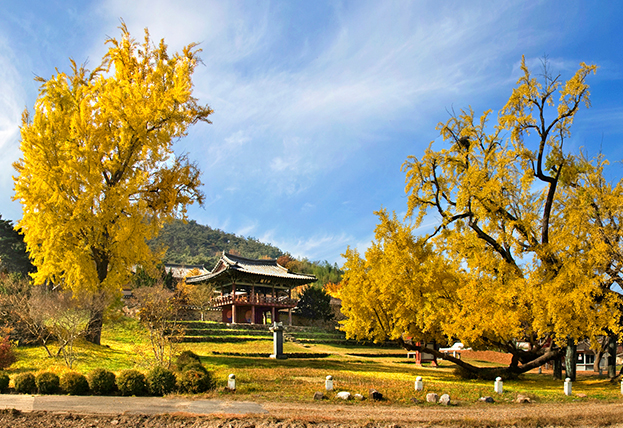
Dodongseowon Confucian Academy
This is a traditional Confucian academy that was founded in commemoration of Kim Goeng-pil (penname: Hanhwondang), the founder of Dohak (Moral Philosophy). Its buildings, which are surrounded by earthen walls, are laid out in a harmonious way. The 400-year-old gingko tree at the school’s entrance and water of Nakdonggang River flowing in front make the area very scenic. The school was designated as National Historic Site No. 488 and Treasure No. 350. In July 2019, it was included among Korea’s nine representative seowon (traditional Confucian academies), which were registered as a UNESCO World Cultural Heritage. -
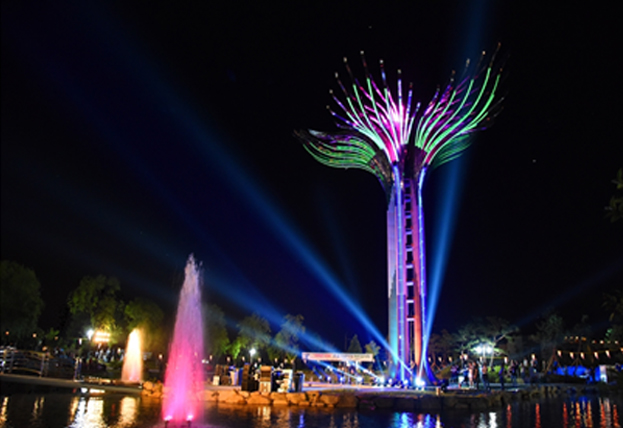
Centennial Tower
The structure (26m high and 21m wide), which represents Dalseong, was built on an artificial island to mark the centennial of Dalseong-Gun Office and wish for its strong performance over the following 100 years. The artificial island was formed in the shape of Daegu. It has become a major landmark in Dalseong-gun and is used for an array of cultural activities such as open-air weddings and performances.
